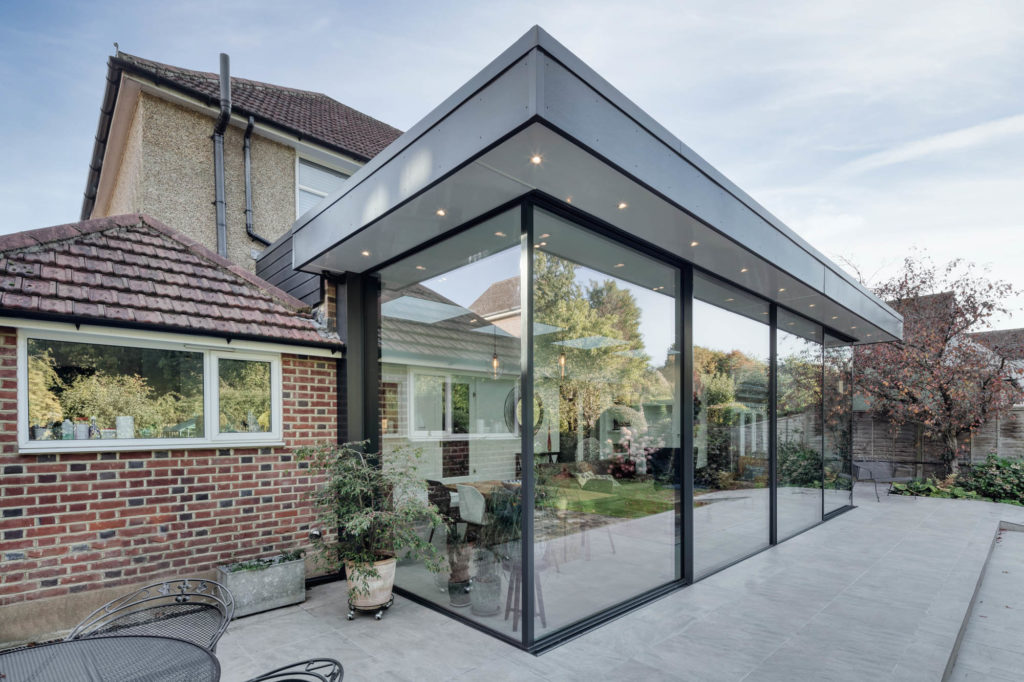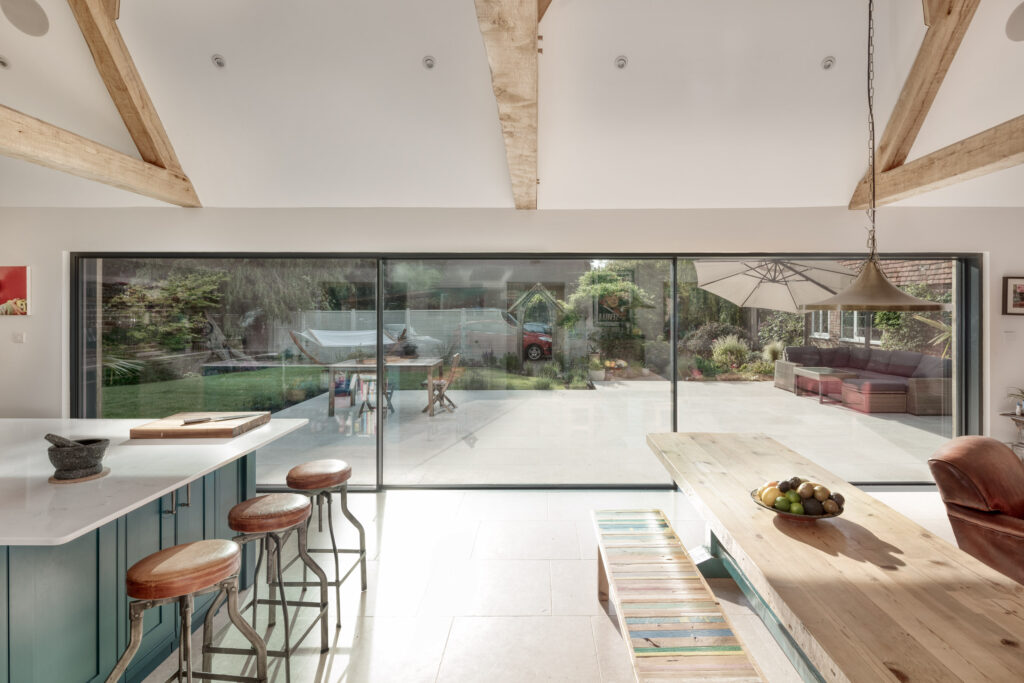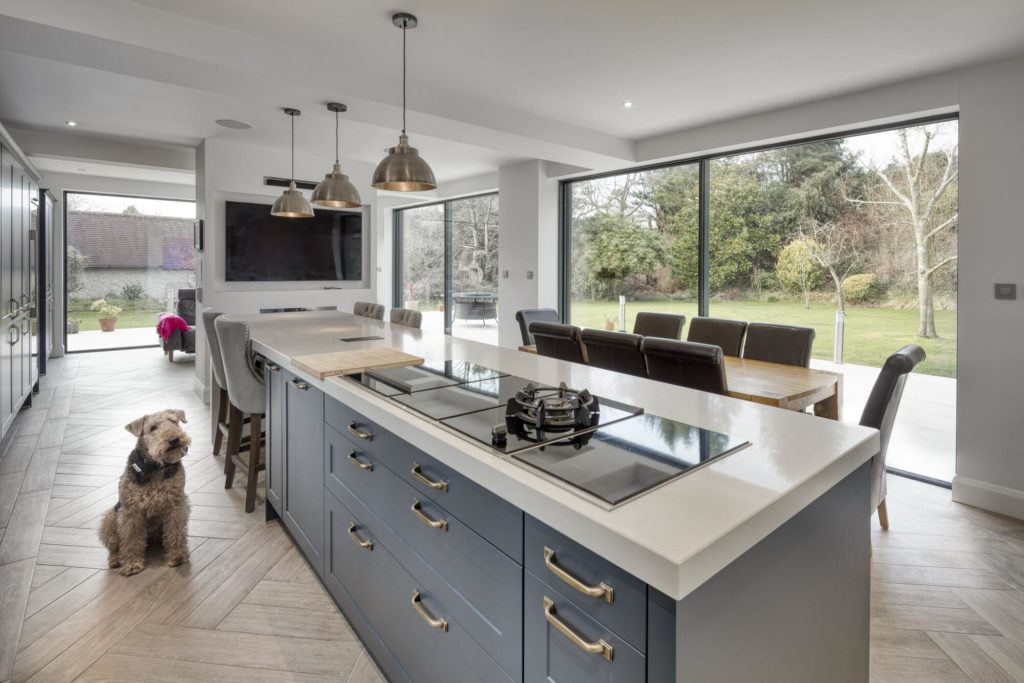Architects undertake seven years of training before qualifying which is then supplemented by years of hands-on work experience all of which helps develop the skills and know-how to understand your brief.
Here we talk to Daniel Kemp and Sharon Godsmark, directors of Maidstone-based EP Architects Ltd to gain some insight into how much value can be added when using a professional, especially when planning an extension with frameless sliding doors.

This is often the first question that is put under the spotlight when undertaking any renovation project and there is no clearly defined answer. Many people make the mistake of approaching a builder before they have a complete design. A good builder will ask you to engage a designer prior to taking on a project as they can’t provide an informed price without a full design which has building control approval. If the project involves architectural glazing, such as frameless sliding doors, an architect’s expertise will help you make the most of your investment.
The budget is always the overarching concern on any project and professional services should be considered as part of the overall project value. As a broad-brush guide, architect fees range between 5% and 12% of the construction cost for design stages, including planning and building control approval; it can be as much as a quarter of the costs if they are asked to project manage the build.
Architects are there to guide clients through the design, planning and construction process whether the project is a new-build house or works to an existing property. They are trained to make the most of a space and will be up to date with construction methods, as well as the latest building regulations. As we move closer to an era of low energy homes, these factors are becoming more important, especially when designing an extension with glass sliding doors.
A good architect will save their clients’ money by exploring all possible options for the project and avoiding any costly mistakes. “Not only that,” says Sharon, “but architects also have experience in dealing with local authorities for planning and building control matters as well as other consultants that might need to come on board.”
Depending on the location and condition of a site, this can include planning, archaeological and heritage consultants, structural, mechanical and electrical engineers and environmental consultants including landscaping, ecology and arboriculture. It’s helpful to have someone on the team who can speak their language. “Registered architects, like many other professional consultants, are subject to a code of practice and have professional indemnity insurance (Pi) to protect their clients,” continues Sharon.
To find an architect, the best point of reference is the Architects Registration Board, where all architects must be registered or the Royal Institute of British Architects.


“The structural solution has long been the primary limiting factor, especially for residential extensions, with clients striving for ever larger glazed elements. Since the introduction of Part O of the Building Regulations in June 2022, the amount of glass in new-build developments has been affected by the orientation of the wall, with the G-value (how much energy the glazing allows to enter the building) and U-value (how much energy is lost through the glazing) needing to be finely balanced by your SAP/energy assessor,” says Daniel. “Part O calculations (which aim to limit overheating) have the biggest penalties associated with large areas of glazing. The SAP calculation (which gives a building a score for its annual energy requirement) and Part O calculation are a balancing act between retaining heat and preventing overheating. Assessors are struggling with this issue following the recent changes. A good energy assessor can save you thousands by avoiding over-specifying glazed elements.”

These ratios are often driven by the style of property and local planning restrictions. The final glazing performance specification will ultimately be determined by the SAP and overheating calculations in new builds. The glazing of any windows, doors and roof lights in an extension should be limited to 25% of the extension floor area. These latter considerations are usually made during the building control stage to ensure the building achieves compliance with the approved building regulations. “We are finding that some projects, especially new-build projects, require a more in-depth approach at the pre-planning and planning stages,” says Daniel. “Involving the energy assessor at this stage can help avoid resubmission to the local planning authority with amended schemes to meet the requirements of SAP and Part O. If a client is contemplating achieving Passivhaus standards for their project they should appoint an accredited assessor at the briefing stage of the project to work with their designer.”

Prevailing wind and weather do impact glazing choices, as explained earlier. However, frameless sliding doors are far more suitable in areas with strong winds, as bi-fold doors may be damaged or even ripped away from the structure in extreme cases. In coastal areas, materials and finishes should be carefully considered as the harsh environment can cause the failure of standard products. You should always discuss the location and orientation of your project with your glazing provider, to ensure the specification suits the site conditions.
“A minimum of 1/20th of a room’s internal floor space should be openable windows for ventilation requirements,” explains Sharon. “If this can’t be achieved then a mechanical ventilator may be employed. Trickle ventilators [often found above windows and doors] may also be used alongside openable windows to meet the minimum ventilation standards (Part F of the building regulations, also updated in 2022).” Beams and lintels for new openings should be designed by the manufacturer or a structural engineer and approved by your Building Control Officer.

“Each material has its merits”, says Sharon, “on the one hand, aluminium is far more durable and low maintenance when compared to timber. Many of our clients live in listed buildings where aluminium is not acceptable by the local planners, in these cases new or replacement timber may be the only option. Both materials are aesthetically pleasing.” Aluminium-framed glass sliding doors have a larger strength to weight ratio making them more suitable for use in larger openings.
“Porcelain tiles are a great way to achieve a flush finish between internal and external spaces when using glass sliding doors,” believes Daniel. “A thicker gauge tile with a slip resistant finish (great for use around swimming pools) will need to be used externally, the two different tile gauges can have identical appearances helping clients achieve a seamless transition from inside to out.”
“It would always be preferable to find and specify a system which has a well-designed, integrated, drainage solution,” says Daniel. “This allows the builder to easily connect into the onsite surface water system.”

EP Architects Ltd. have been providing clients with planning and design advice in the South East for over 30 years. Minima Sliding have worked with the practice on several projects.
01622 829314 – www.eparchitects.co.uk